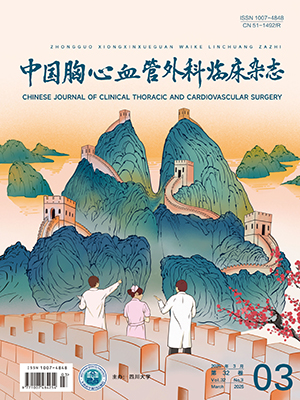| 1. |
施建新, 高成新, 孙德魁等.胸顶部肿瘤外科治疗27例临床分析.中华外科杂志, 2004, 42(2):72-74.
|
| 2. |
Dalbayrak S, Yaman O, Yilmaz M, et al. Results of the transsternal approach to cervicothoracic junction lesions. Turk Neurosurg, 2014, 24(5):720-725.
|
| 3. |
Christison-Lagay ER, Darcy DG, Stanelle EJ, et al. "Trap-door" and "clamshell" surgical approaches for the management of pediatric tumors of thecervicothoracic junction and mediastinum. J Pediatr Surg, 2014, 49(1):172-177.
|
| 4. |
Aigner C, Hoda MA, Klepetko W. Combined cervicothoracic approaches for complex mediastinal masses. Thorac Surg Clin, 2009, 19(1):107-112.
|
| 5. |
Spaggiari L, Pastorino U. Transmanubrial approach with antero-lateral thoracotomy for apical chest tumor. Ann Thorac Surg, 1999, 68(2):590-593.
|
| 6. |
Park HY, Lee SH, Park SJ, et al. Surgical management with radiation therapy for metastatic spinal tumors located on cervicothoracic junction:a single center study. J Korean Neurosurg Soc, 2015, 57 (1):42-49.
|
| 7. |
Korst RJ, Burt ME. Cervicothoracic tumors:results of resection by the "hemi-clamshell" approach. J Thorac Cardiovasc Surg, 1998, 115(2):286-295.
|
| 8. |
Wang VY, Chou D. The cervicothoracic junction. Neurosurg Clin N Am, 2007, 18(2):365-371.
|
| 9. |
Baker JF, Shafqat A, Devitt A, et al. Surgical management of metastatic lesions at the cervicothoracic junction. J Craniovertebr Junction Spine, 2015, 6(3):115-119.
|
| 10. |
Spaggiari L, Calabrese L, Gioacchino G, et al. Cervico-thoracic tumors resection through transmanubrial osteomuscular sparing approach. Eur J Cardiothorac Surg, 1999, 16(5):564-567.
|
| 11. |
Le H, Balabhadra R, Park J, et al. Surgical treatment of tumors involving the cervicothoracic junction. Neurosurg Focus, 2003, 15(5):E3.
|
| 12. |
Rusca M, Carbognani P, Bobbio P. The modified "hemi-clamshell" approach for tumors of the cervicothoracic junction. Ann Thorac Surg, 2000, 69(6):1961-1963.
|
| 13. |
Matsuguma H, Nakahara R, Ishikawa Y, et al. Transmanubrial osteomuscular sparing approach for lung cancer invading the anterior part of the thoracic inlet. Gen Thorac Cardiovasc Surg, 2010, 58(3):149-154.
|
| 14. |
Huang YX, Tian NF, Chi YL, et al. Mini-open anterior approach to the cervicothoracic junction:a cadaveric study. Eur Spine J, 2013, 22(7):1533-1538.
|
| 15. |
Radek A, Maciejczak A, Kowalewski J, et al. Trans-sternal approach to the cervicothoracic junction. Neurol Neurochir Pol, 1999, 33(5):1201-1213.
|
| 16. |
Lebreton G, Baste JM, Thumerel M, et al. The hemiclamshell approach in thoracic surgery:indications and associated morbidity in 50 patients. Interact Cardiovasc Thorac Surg, 2009, 9(6):965-969.
|
| 17. |
Luciani GB, Lucchese G. Minimal-access median sternotomy for aortic valve replacement. J Thorac Dis, 2013, 5(Suppl 6):S650-S653.
|
| 18. |
Raja SG, Benedetto U, Amrani M. Aortic valve replacement through J-shaped partial upper sternotomy. J Thorac Dis, 2013, 5 (Suppl 6):S662-S668.
|
| 19. |
Grunenwald D, Spaggiari L. Transmanubrial osteomuscular sparing approach for apical chest tumors. Ann Thorac Surg, 1997, 63(2):563-566.
|
| 20. |
杨立信, 赵铁军, 陆超敬, 等.劈开胸骨柄绕胸锁关节切口切除颈胸交界部肿瘤.中华胸心血管外科杂志, 2012, 28(2):106-107.
|




